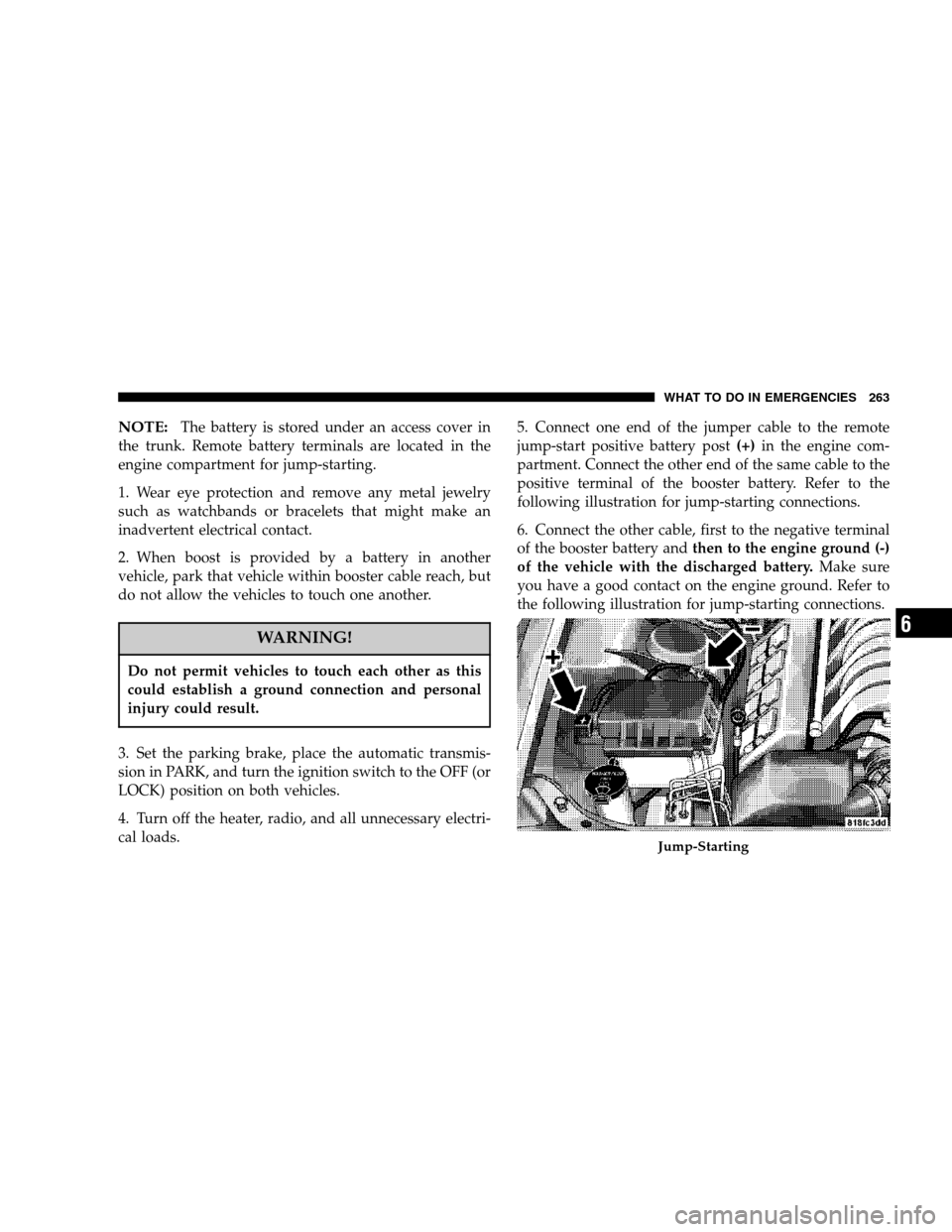Page 41 of 360

8. The driver and front passenger seats should be moved
back as far as practical to allow the airbags time to inflate.
9. If your vehicle has side curtain airbags do not lean
against the door, airbags will inflate forcefully into the
space between you and the door.
10. If the airbag system in this vehicle needs to be
modified to accommodate a disabled person, contact the
Customer Center. Phone numbers are provided in the�If
You Need Customer Assistance�section in this manual.WARNING!
•Relying on the airbags alone could lead to more
severe injuries in a collision. The airbags work
with your seat belt to restrain you properly. In
some collisions, the airbags won’t deploy at all.
Always wear your seat belts even though you
have airbags.
•Being too close to the steering wheel or instru-
ment panel during airbag deployment could cause
serious injury. Airbags need room to inflate. Sit
back, comfortably extending your arms to reach
the steering wheel or instrument panel.
•If the vehicle has side curtain airbags, they also
need room to inflate. Do not lean against the door
or window. Sit upright in the center of the seat.
Air Bag System Components
The airbag system consists of the following:
•Airbag Control Module (ACM)
•Side Remote Acceleration Sensors (if equipped)
THINGS TO KNOW BEFORE STARTING YOUR VEHICLE 41
2
Page 263 of 360

NOTE:The battery is stored under an access cover in
the trunk. Remote battery terminals are located in the
engine compartment for jump-starting.
1. Wear eye protection and remove any metal jewelry
such as watchbands or bracelets that might make an
inadvertent electrical contact.
2. When boost is provided by a battery in another
vehicle, park that vehicle within booster cable reach, but
do not allow the vehicles to touch one another.
WARNING!
Do not permit vehicles to touch each other as this
could establish a ground connection and personal
injury could result.
3. Set the parking brake, place the automatic transmis-
sion in PARK, and turn the ignition switch to the OFF (or
LOCK) position on both vehicles.
4. Turn off the heater, radio, and all unnecessary electri-
cal loads.5. Connect one end of the jumper cable to the remote
jump-start positive battery post(+)in the engine com-
partment. Connect the other end of the same cable to the
positive terminal of the booster battery. Refer to the
following illustration for jump-starting connections.
6. Connect the other cable, first to the negative terminal
of the booster battery andthen to the engine ground (-)
of the vehicle with the discharged battery.Make sure
you have a good contact on the engine ground. Refer to
the following illustration for jump-starting connections.
Jump-Starting
WHAT TO DO IN EMERGENCIES 263
6
Page 281 of 360
•Do not try to start engine by pushing or towing the
vehicle.
•Do not idle the engine with any spark plug wires
disconnected or removed, such as when diagnostic
testing, or for prolonged periods during very rough
idling or malfunctioning operating conditions.
Maintenance-Free Battery
The top of the MAINTENANCE-FREE battery is perma-
nently sealed. You will never have to add water, nor is
periodic maintenance required.
NOTE:The battery is stored under an access cover in
the trunk. Remote battery terminals are located in the
engine compartment for jump-starting.Battery Location
MAINTAINING YOUR VEHICLE 281
7
Page 349 of 360

Door Locks............................ 21
Door Locks, Automatic................... 22
Door Opener, Garage.................... 116
DriveBelts ............................ 278
Driving
On Slippery Surfaces.................. 209
DVD Player (Video Entertainment System).... 174
Electric Remote Mirrors................... 64
Electrical Power Outlets.................. 124
Electronic Brake Control System............ 214
Electronic Speed Control (Cruise Control)..... 109
Electronic Stability Program (ESP).......... 216
Electronic Throttle Control Warning Light..... 141
Electronic Vehicle Information Center (EVIC) . . 144
Emergency, In Case of
Freeing Vehicle When Stuck............. 265
Hazard Warning Flasher................ 256
JumpStarting ........................ 262
Overheating......................... 256
Towing ............................. 266
Emission Control System Maintenance....273,318
Engine............................... 271Air Cleaner.......................... 279
Block Heater......................... 199
Break-In Recommendations............... 55
Checking Oil Level.................... 275
Compartment........................ 271
Coolant (Antifreeze)................287,314
Cooling ............................ 287
Exhaust Gas Caution................ 56,248
FailstoStart ......................... 197
Flooded, Starting..................... 197
Fuel Requirements.................246,313
Oil ..........................275,313,314
Oil Change Interval................... 276
Oil Filler Cap........................ 277
OilSelection ......................277,313
Overheating......................... 256
Temperature Gauge................... 139
Enhanced Accident Response Feature......... 45
Ethanol.............................. 247
Event Data Recorder..................... 46
Exhaust Gas Caution............. 56,57,248,286
Exhaust System...................... 56,286
ExteriorFoldingMirrors .................. 64
INDEX 349
10